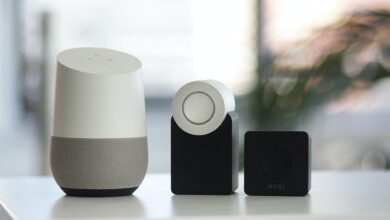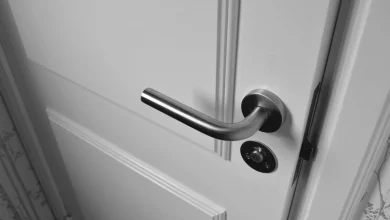A Beginner’s Guide to Door Motion Sensors
KEY TAKEAWAYS
As it stands, burglary is the most feared property crime in the U.S., and that fear is based on good reasons. Statistics from the FBI show that break-ins are common occurrences across the country, with more than 1.1 million burglaries in 2019. Furthermore, more burglaries occurred during the day than at night, with 30% of all counts of burglary in 2020 happened when the sun was out.
The most common method burglars use to break into homes is through the front door. So, aside from a durable exterior door that’s difficult to kick open, it’s also best to install door motion sensors. They can alert you if a thief is trying to break in and, at the same time, deter any attempts of burglary.
How Do Door Sensors Work
In the simplest terms, door sensors alert you when a door has been opened. A contact sensor, which employs a magnet to operate a circuit that activates an alert or alarm, is by far the most popular kind of door sensor. However, a second version utilizes pressing a switch to carry out the same fundamental task.
When your security system is armed, the sensor triggers an alarm if the sensor and the corresponding magnet or switch move apart as the door opens. Homeowners frequently use door sensors to secure entrances but also function on other kinds of doors. They are becoming one of the most widely used activity triggers in smart home design because of their versatility.
How Contact Sensors Work
Contact sensors, the key component of most door sensors, have two distinct parts: a reed switch and a magnet.
Reed Switch
Two ferromagnetic blades housed in a small glass capsule make up a reed switch. There are usually a few microns separating the blades, meaning the electricity cannot freely pass through the switch because the circuit is open.
Magnet
The two blades of a reed switch come together when a magnet is applied, shutting the circuit and enabling electricity to flow. The circuit is disrupted when the magnet is removed. This could trigger an alarm or emit a loud chime when your home security system is active.
Door Contact Sensors And Access Control
Door sensors, especially standalone sensors, occasionally only trigger local alerts like chimes or alarm sirens. However, modern versions also send text messages or cell phone alerts.
In several other circumstances, door sensors may also be a component of larger security systems. Opening a door that is a part of a security system may cause footage to be recorded or may cause a monitoring center to alert the authorities.
Advantages Of Having Door Sensors
Door sensors serve two crucial functions when used for their intended purpose:
- Protect you from intruders getting in. A door sensor alerts you when anyone gets in without authorization. You can also program it to emit a loud chime or an alarm to deter burglars from breaking into your house.
- Keep an eye on people in your house from getting out. Additionally, you may employ a door sensor to monitor everyone within the house. This is extremely helpful when babysitting your kids while doing household chores. For instance, a door sensor can alert you when your five-year-old is trying to leave the house.
Door sensors have a variety of other purposes because they operate on such a basic concept, from securing desk drawers to ensuring your delivery packages have arrived.
Types Of Door Sensors
Basically, you can employ a door sensor with any type of door. Here are your options:
Surface-Mount
The most typical door sensor consists of a magnet attached to the door or frame and a reed switch attached to the opposite side.
Rollerball
In this setup, rollerball sensors are mounted in the door frames’ recessed areas. The hinged edge of the door presses down on the ball when it is closed, cutting off the circuit. When the circuit is interrupted as the door is opened, the sensor triggers an alarm.
Overhead (Garage Door) Sensors
Surface-mount sensors and roll-up garage door sensors are often mistaken for one another. However, they are not the same. Garage door sensors include larger magnets since the reed switch, and the magnet must be kept farther apart to prevent false alarms.
Pull-Apart Sensors
A pull-apart sensor is typically used on an emergency door that is intended to be closed most of the time. The actual sensor is a magnet attached to a wire and placed inside a tube. By removing the magnet from the tube when the door opens, the circuit cannot be closed by the door shutting alone.
Recessed Sensors
These sensors are smaller in size compared to others. Recessed sensors are installed by drilling holes inside doors and inserting them. In this way, the sensors are hidden as well.
Are you interested in purchasing a security system for your home? Check out this guide by Security Forward on how to install a home security system.



